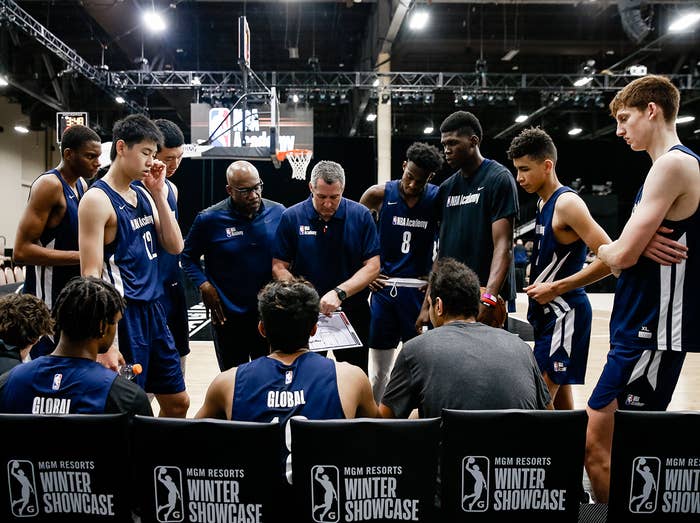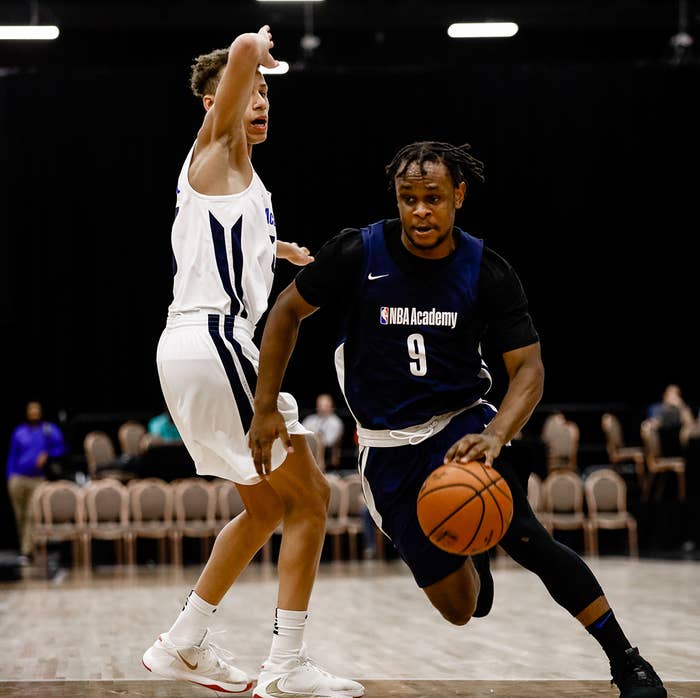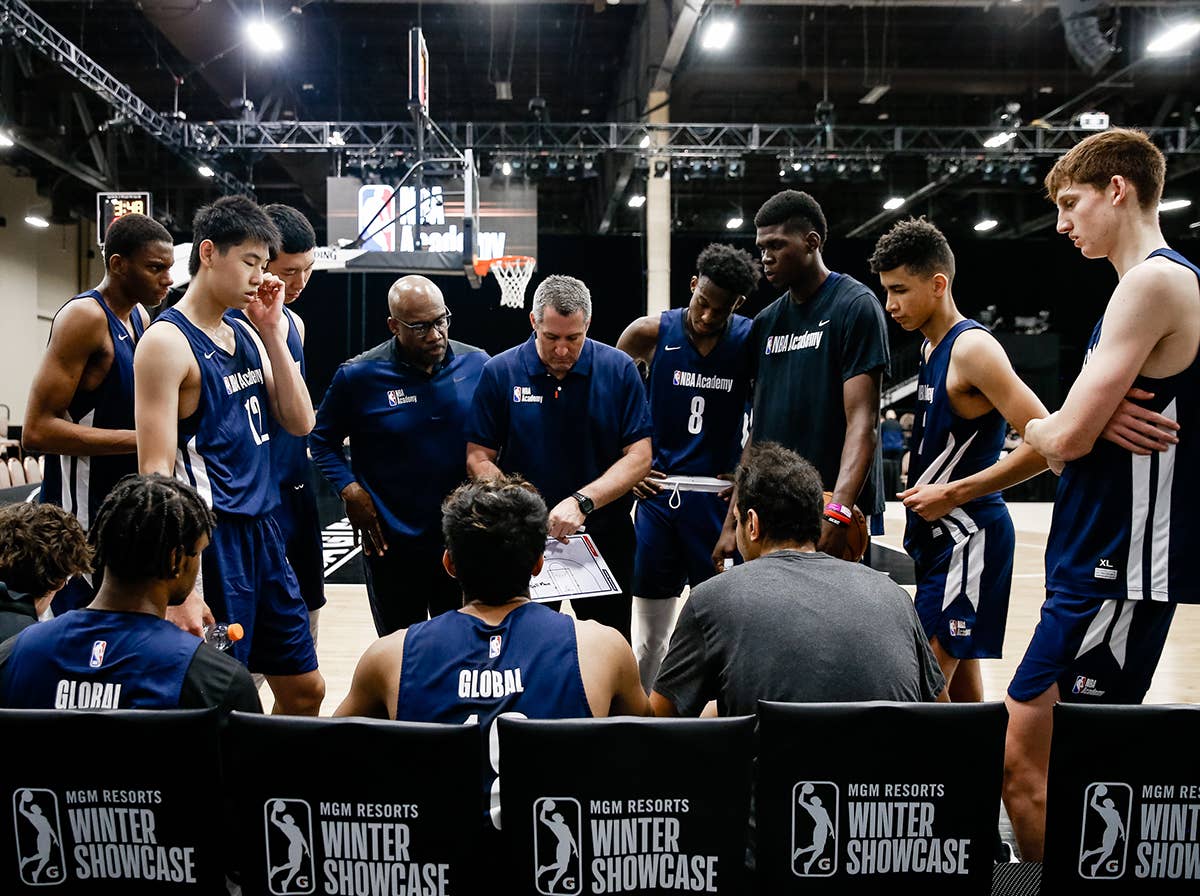
Just as the appeal and impact of the game spreads across the globe, so too does the NBA’s search for the next superstar. Jimmy Ness hits the bleachers to sit with the scouts as they work to unearth the league’s next gem.
This interview comes courtesy of Homecourt – a digital basketball publication with a unique perspective on the culture of basketball and the way it enriches lives, right across the world. Catch more stories like this at Homecourtmag.com
Sport is a human pursuit. The quest for athletic mastery slices through border, regime and financial status. Whether post-soviet parish or emerging megalopolis; talent should be the only obstacle to ballin’. If you’re good, you’re good; no matter where you live. The NBA understands this. Their vast network trains and discovers hoopers from 100+ countries. With eyes on Africa, Asia and Australia, they want to reach every player, in every corner of the map.
When the talent pool widens, the NBA only gets better. Imagine the court-pummelling contest of a league that fully scours the globe. Bol Bol and Nikola Jokić are just the beginning. There’s a trove of extraordinary swagger and strategy waiting to add horsepower to an already kinetic league.
Far from an imperialistic crusade; the NBA’s offshore activity is people-first. They pour considerable resources into altering lives off-court. Going pro is merely a potential destination on the express-lane to upskilling mentally, emotionally and physically. NBA camps have reached more than 3000 participants, they also build facilities and support impoverished communities.
With a towering occupational title like “Senior Director of International Basketball Operations and Elite Basketball,” Chris Ebersole knows hoops. He commands a squad which consults in every major league and demographic you can think of.
Like asking a cobbler about shoes or a cop about crime, when you speak to the head of the world’s leading basketball network, you have to ask: What makes a player good enough for the NBA?
“I think everyone probably would understand that we would look for a lot of very specific physical traits for basketball players,” Ebersole explains from the league’s New York office.
“Obviously, tracking where the NBA is going towards more of a positionless game, [we are focused on] finding players that can fit that versatile mould and have the physical ability, foot speed, height and length to be able to guard multiple positions.”
For junior ballers, who will be scouted then managed throughout their development, it’s a little different. They can be as raw as a Wu-Tang demo, as long as they have the right hardware. Juvenile potential is defined in terms of creativity, risk-taking and play-making rather than stats like turnovers or accuracy.
“A lot of what we look at would be kind of on the mental make-up side and really the growth mindset,” says Chris.
“Finding young players who have a really exceptional work ethic and desire to put in the work, and get better and improve themselves. And they’re not afraid to develop their weaknesses. A lot of players will lean on their strengths from a young age, but I think finding players who have that mindset of developing all areas of their game, even if it started out as a weakness. I think that’s definitely a common thread with many of the players that we’ve seen be the most successful coming out.”

Chris and his team have encountered the entire spectrum of athlete. They’ve witnessed the emerging virtuoso, the injury plagued underdog and the geographically isolated upstart. Ebersole personally has a tender spot for intercontinental ballers and lists additional BWB grads like Pascal Siakam and Jamal Murray as favourites.
Chris is also a San Fran native and knows he will be excommunicated for not mentioning Steph Curry in his top players. Another shout-out goes to the Greek Freak, but not just because he’s the NBA Zeus.
“It’s been really fun to see Giannis and his development, you know, from a scrawny rookie. I believe he was drafted my first or second year when I was in the NBA. I remember meeting him at the NBA Draft night and just thinking how skinny he was, how lanky he was,” recalls Chris.
“You know, his legs were about my size on their own, but to see his development and his transformation and just the amount of growth he’s done since arriving in the league, I think that combined with his personality, the way he approaches the game and the way he approaches life and the positive energy he brings and kind of surrounds himself with, I think it’s contagious. I think it carries over to his team.”
The future of training and scouting will be virtual. Whether referee, coach or player, every position could be moulded remotely.
While COVID-19 has accelerated innovation, Chris says the NBA has just begun spelunking augmented reality’s depths. The league’s initial venture is the app Homecourt A.I. Sadly, no relation to this site.
“It can track a lot of cool things that I would have never imagined possible, five, seven years ago,” reflects Ebersole. “The arc on each shot, release angle, release time, it’ll track where all your shots are from as well. After your work-out, you can see your own shot chart just like you’re watching an NBA game.”
As opportunities to perfect basketball are edging closer to ubiquity, it’s possible there’s an All-Star waiting in a remote colony or current war-zone. Whatever the next frontier is, Chris will be there.
“We are committed to finding top talent all around the world; no matter where it is. The big takeaway, if you’re a young player, is that no matter where you are, if you work-out and you develop your game and you hone your skills; follow that dream and we will have someone to find you, and a program for you.”

